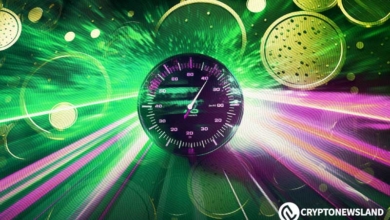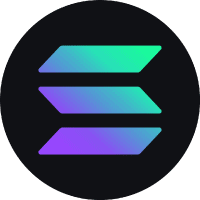
Coin-related
Price calculator
Price history
Price prediction
Technical analysis
Coin buying guide
Crypto category
Profit calculator

Gas priceGAS
How do you feel about Gas today?
Price of Gas today
What is the highest price of GAS?
What is the lowest price of GAS?
Gas price prediction
When is a good time to buy GAS? Should I buy or sell GAS now?
What will the price of GAS be in 2026?
What will the price of GAS be in 2031?
Gas price history (USD)
 Lowest price
Lowest price Highest price
Highest price 
Gas market information
Gas's market cap history
Gas market
Gas holdings by concentration
Gas addresses by time held

Gas ratings
About Gas (GAS)
What Is GAS?
GAS, commonly referred to as NEOGas, is an integral component of the NEO blockchain, a platform often dubbed as China's answer to Ethereum. The NEO network is unique in its adoption of a dual token mechanism, aiming to separate the rights of governance from the rights of using the network. While NEO represents the governance aspect, GAS is the operational token, facilitating various activities on the NEO network. Much like the concept of "gas" on the Ethereum platform, GAS in the NEO ecosystem is used to pay for a myriad of operations, making it essential for the smooth functioning of the network.
The NEO network's vision of a "smart economy" is underpinned by its dual-token system. With a total supply of 100 million, the NEO token allows holders to participate in governance, voting for the Neo Committee, which oversees the blockchain's operations. On the other hand, GAS, which is generated with every block processed, is used to pay transaction fees and the deployment of smart contracts on the NEO network. This dual system ensures that governance remains decentralized while the network remains agile and efficient.
Resources
Official Documents: https://docs.neo.org/docs/en-us/index.html
Official Website: https://neo.org/
How Does GAS Work?
The NEO network charges GAS for the operation and storage of tokens and smart contracts. This mechanism prevents the potential abuse of node resources. System fees collected are burned, ensuring a deflationary aspect to GAS. Meanwhile, network fees are redistributed to consensus nodes, providing them with an economic incentive to maintain the network's integrity and efficiency.
GAS is produced at a rate determined by the network. For instance, 5 GAS tokens are generated every block, and this is distributed in various proportions. The largest chunk of GAS is given to voters, rewarding them for their active role in network governance. This system not only incentivizes participation but also ensures that those who contribute to the network's decision-making are duly rewarded.
What Is GAS Token?
GAS is one of the two tokens created by the Neo Foundation. Its primary function is to serve as a utility token for the NEO network. GAS is used to pay for transaction fees and the deployment of smart contracts. Unlike NEO, which is indivisible, GAS is divisible, making it suitable for microtransactions on the network.
By holding NEO in specific wallets, users can earn GAS as a form of dividend. This staking mechanism offers NEO holders an additional avenue for returns, making the NEO ecosystem attractive for both governance participation and passive income generation.
What Determines GAS's Price?
In the ever-evolving Web3 landscape, the price of GAS, a pivotal token within the NEO network, is influenced by a myriad of factors rooted in blockchain dynamics and external market conditions. At its core, like all assets, the principle of supply and demand plays a pivotal role in determining GAS's price. As cryptocurrency adoption surges and the NEO network gains traction, the demand for GAS can see significant fluctuations. Cryptocurrency charts and cryptocurrency analysis provide insights into these shifts, often highlighting the impact of the latest news, from cryptocurrency regulation changes to the latest developments in the blockchain space.
Market volatility, a hallmark of the cryptocurrency realm, further complicates cryptocurrency price predictions. Factors such as cryptocurrency risks, security concerns, and the broader cryptocurrency trends can lead to sudden and dramatic price swings. For instance, if the best crypto investment for 2023 and beyond is touted to be tokens like GAS, it could drive a surge in demand, influencing its price. In essence, while the intrinsic mechanics of the NEO network and blockchain principles guide GAS's foundational value, external factors, from cryptocurrency regulation to the latest buzz in the Web3 domain, shape its market price.
GAS to local currency
- 1
- 2
- 3
- 4
- 5
How to buy Gas(GAS)

Create Your Free Bitget Account

Verify Your Account

Convert Gas to GAS
Trade GAS perpetual futures
After having successfully signed up on Bitget and purchased USDT or GAS tokens, you can start trading derivatives, including GAS futures and margin trading to increase your income.
The current price of GAS is $2.08, with a 24h price change of +3.25%. Traders can profit by either going long or short onGAS futures.
Join GAS copy trading by following elite traders.
Gas news





Buy more
FAQ
What is the current price of Gas?
What is the 24 hour trading volume of Gas?
What is the all-time high of Gas?
Can I buy Gas on Bitget?
Can I get a steady income from investing in Gas?
Where can I buy Gas with the lowest fee?
Where can I buy Gas (GAS)?
Video section — quick verification, quick trading

Bitget Insights



Related assets



































Gas Social Data
In the last 24 hours, the social media sentiment score for Gas was 3, and the social media sentiment towards Gas price trend was Bullish. The overall Gas social media score was 0, which ranks 753 among all cryptocurrencies.
According to LunarCrush, in the last 24 hours, cryptocurrencies were mentioned on social media a total of 1,058,120 times, with Gas being mentioned with a frequency ratio of 0.01%, ranking 366 among all cryptocurrencies.
In the last 24 hours, there were a total of 656 unique users discussing Gas, with a total of Gas mentions of 67. However, compared to the previous 24-hour period, the number of unique users increase by 53%, and the total number of mentions has decrease by 18%.
On Twitter, there were a total of 1 tweets mentioning Gas in the last 24 hours. Among them, 0% are bullish on Gas, 100% are bearish on Gas, and 0% are neutral on Gas.
On Reddit, there were 2 posts mentioning Gas in the last 24 hours. Compared to the previous 24-hour period, the number of mentions decrease by 0% .
All social overview
3